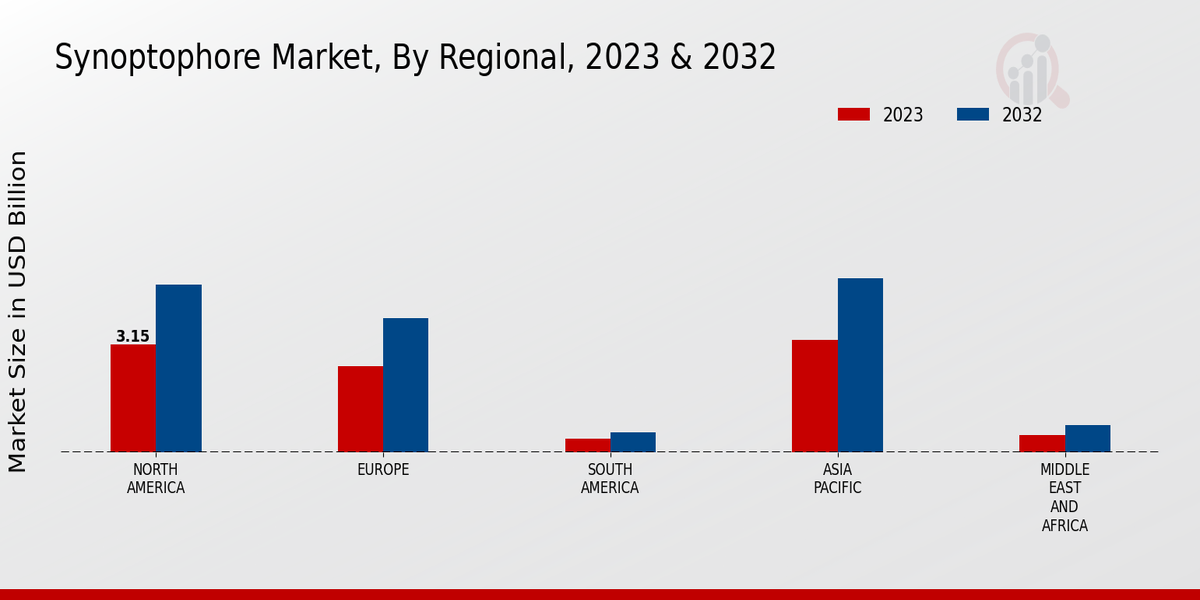Market Growth Projections
The Global Synoptophore Market Industry is projected to experience substantial growth over the next decade. With an estimated market value of 7.66 USD Billion in 2024, it is expected to reach 13.1 USD Billion by 2035, indicating a robust expansion trajectory. The compound annual growth rate of 4.98% from 2025 to 2035 suggests a steady increase in demand for synoptophores, driven by advancements in technology and rising healthcare investments. This growth is indicative of the increasing recognition of the importance of eye health and the need for effective diagnostic tools in clinical settings.
Growing Awareness of Eye Health
There is a notable increase in public awareness regarding eye health, which is positively impacting the Global Synoptophore Market Industry. Educational campaigns and initiatives by health organizations are emphasizing the importance of regular eye examinations and early detection of vision disorders. This heightened awareness is leading to an increase in patient referrals to specialists, thereby driving the demand for diagnostic tools such as synoptophores. As more individuals seek professional eye care, the market is expected to grow, reflecting a shift towards proactive management of eye health and vision-related issues.
Rising Prevalence of Strabismus
The Global Synoptophore Market Industry is experiencing growth due to the increasing prevalence of strabismus, a condition affecting eye alignment. According to health statistics, strabismus affects approximately 4% of the population, leading to a heightened demand for effective treatment solutions. The synoptophore, a device used for diagnosing and treating this condition, plays a crucial role in clinical settings. As awareness of strabismus rises, healthcare providers are more likely to invest in advanced diagnostic equipment, thereby driving market expansion. The Global Synoptophore Market is projected to reach 7.66 USD Billion in 2024, reflecting the growing need for specialized ophthalmic devices.
Technological Advancements in Ophthalmology
Technological innovations in ophthalmology are significantly influencing the Global Synoptophore Market Industry. The introduction of digital synoptophores, which offer enhanced precision and user-friendly interfaces, is attracting healthcare facilities to upgrade their equipment. These advancements not only improve diagnostic accuracy but also streamline treatment processes. As a result, the market is expected to witness a compound annual growth rate of 4.98% from 2025 to 2035. The integration of artificial intelligence and machine learning into synoptophore technology further enhances its capabilities, making it an essential tool in modern ophthalmic practices.
Expansion of Ophthalmic Clinics and Practices
The proliferation of ophthalmic clinics and specialized practices is a key driver for the Global Synoptophore Market Industry. As more healthcare providers establish dedicated eye care facilities, the demand for advanced diagnostic equipment, including synoptophores, is likely to rise. This trend is particularly evident in urban areas where access to specialized eye care is becoming increasingly available. The establishment of new clinics not only increases competition but also encourages innovation in treatment methodologies. Consequently, the market is poised for growth as these clinics invest in state-of-the-art technology to enhance patient care.
Increasing Investment in Healthcare Infrastructure
The Global Synoptophore Market Industry benefits from rising investments in healthcare infrastructure, particularly in developing regions. Governments and private entities are allocating substantial resources to enhance healthcare facilities, which includes the procurement of advanced diagnostic tools like synoptophores. This trend is evident in various countries where healthcare reforms aim to improve access to quality eye care. As a result, the market is likely to expand, with projections indicating a growth to 13.1 USD Billion by 2035. Enhanced healthcare infrastructure not only increases the availability of synoptophores but also promotes better patient outcomes.


















Leave a Comment